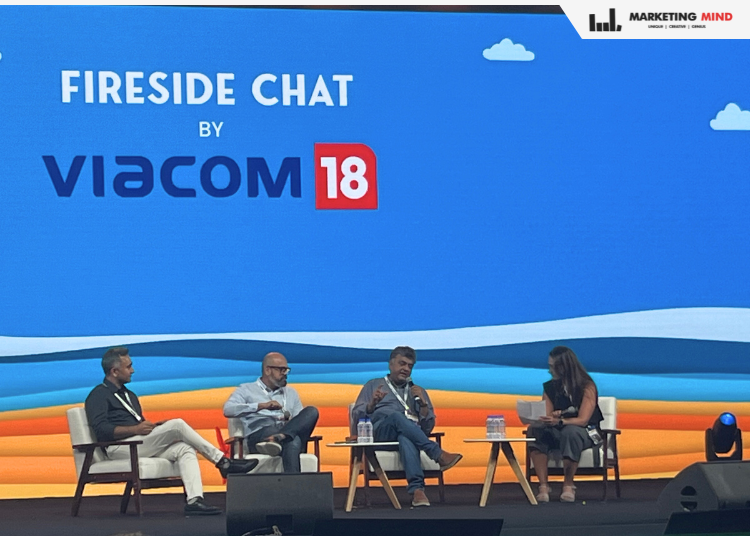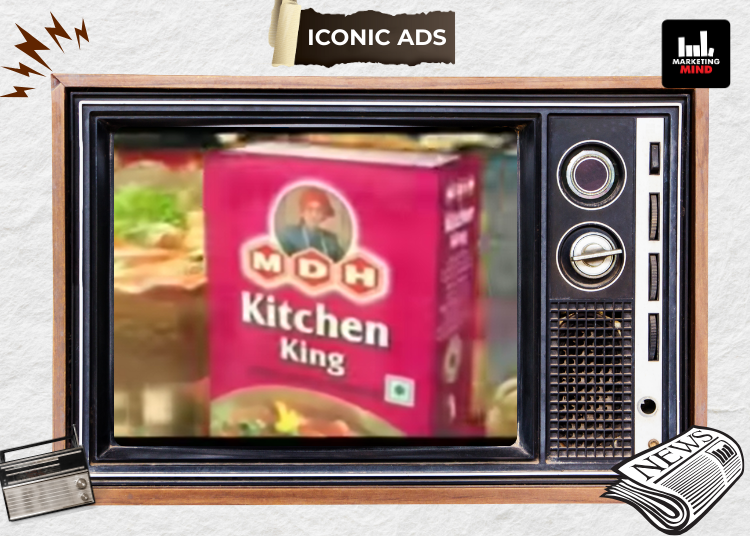In today’s digital landscape, every form of digital media comes with well-defined metrics for measurability, according to Navin Khemka, CEO of South Asia at EssenceMediacom. He emphasised that digital is a medium where the measurement is not a question at all.
On the second day of Goafest 2024, Khemka along with Ankit Kapoor, Head of Marketing and International Business at Parle Agro, Mahesh Shetty, National Sales Head at Viacom18, became a part of ‘The Fireside Chat’ and engaged in a candid discussion on navigating the evolving landscape of marketing and media, wherein consumers and the touchpoint – television and digital – are concerned.
Conducting the conversation was Shibani Gharat, an anchor and Associate Executive Producer. During the conversation, Shetty discussed the evolution of Bigg Boss, highlighting how the show has expanded to include digital creators, thereby increasing its relevance. He emphasised the importance of catering to a diverse set of consumers and noted that the core principle of creating mass content remains unchanged.
Over the past year, his team has merged television and digital divisions to better achieve their goal of reaching a broad audience.
In response to a question about creating widespread brand love, Kapoor underscored the necessity for marketing teams and brand managers to have a clear understanding of the role each medium plays. He also pointed out that only with this clarity can brands successfully cultivate and maintain strong brand loyalty.
“Only through clarity are brands able to achieve what they set out to in terms of brand love,” he added.
Gharat noted that while traditional advertisers are increasingly spending on digital platforms, in the past five to six years, many digital-first platforms have also invested significantly in TV advertising. She then asked Shetty to share some successful strategies these digital-first platforms have used in TV, radio, and film advertising.
Shetty explained that one of the core benefits of television is trust. Any brand aiming for mass reach cannot ignore television. For example, about 4 or 5 years ago, Mamaearth was a Rs 180 crore company, primarily starting as a D2C, online-first company. Around 4 years ago, they began transitioning towards a multi-channel distribution model across the country, which included starting their television journey. Like any other FMCG company, they began investing in television advertising month by month.
“Today, Mamaearth is a 1,700 crore turnover company, achieving this in just 4 or 5 years. This significant growth resulted from extensive efforts in offline distribution. When consumers visit stores and choose between brands, they need to trust the brand they select and the trust element comes when you actually put your brand out on television screens across the country,” he added.
Khemka, agreeing with Shetty, added that India has undergone a significant transformation in the role of mass media for digital brands and brand building.
“When the big e-commerce brands were launched they relied heavily on mass media and traditional advertising. Over time, digital media also began to scale in effectiveness, attracting more viewers and engaging them for longer periods. This led to a new era in the market, as D2C brands started to flourish in the country,” he added.
Kapoor emphasised that television as a medium does not inherently build trust; instead, trust is established through fundamental measurement tools or metrics.
“Trust is cultivated by the brand’s actions, the content it produces, the initiatives undertaken by the government, and the purpose the brand aims to promote. So, it is not the channel or the medium itself that fosters trust,” he added.
Gharat asked Khemka about the challenge of measurement in digital media, noting that any conversation about multimedia and digital strategies is incomplete without discussing this topic. She requested his insights on how the industry can address the issue of measurement for digital.
Commenting on the same, Khemka said, “Nowadays if you look at every digital media, there are metrics which are well defined from a measurability point of view. You know exactly on a digital campaign, a search campaign, social campaign or influencer campaign, what is the metric that you are chasing. And if that metric is being met, it could be clicks, downloads, increase in search volumes, it is very well defined. In fact, I would say digital is a place where the measurement is not a question at all.”
Kapoor acknowledged that he often questions agencies about the authenticity of digital data, such as bot impressions and traffic from irrelevant websites, citing numerous global reports on these issues.
“These discussions are essential for the industry to address these problems. Currently, it is estimated, based on multiple global reports, that 20-45% of media spend on digital is wasted. While the exact number is uncertain, this is a significant issue that needs attention,” he stated.
Kapoor also emphasised the importance of collective accountability in addressing and resolving this problem.
While concluding the session, Gharat asked the panelists about their views on future trends and opportunities in TV and media collaboration. Khemka responded, emphasising that everyone agrees it is not a matter of choosing one over the other. Instead, it is an omni-channel and holistic approach.
“I believe the consumer should always come first. Wherever my consumer is, I need to reach out and make a connection. My focus would be on prioritisng the consumer while staying true to both their needs and the brand’s objectives. By doing so, I can create effective media and communication strategies,” he added.
Shetty emphasised that whether it’s television or digital platforms, focusing solely on one or the other doesn’t align with the consumer’s behavior, as they engage with both mediums. Thus, the approach should revolve around following the consumer’s preferences, whether it pertains to content or advertising communication.
















